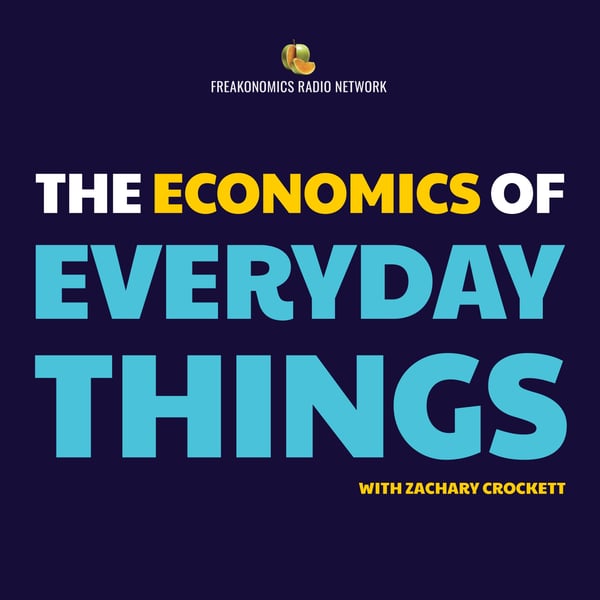36. ATMs
The Economics of Everyday Things
Freakonomics Network
4.8 • 1.2K Ratings
🗓️ 12 February 2024
⏱️ 20 minutes
🧾️ Download transcript
Summary
Transcript
Click on a timestamp to play from that location
| 0:00.0 | Imagine that you're out at a dive bar on a Saturday night. You order a drink and take out your credit card and the bartender |
| 0:15.4 | she tells you they only take cash. And because you're living in the 21st century |
| 0:21.0 | you don't have any cash in your wallet. the where you see your salvation. It's an ATM. |
| 0:36.0 | A.T.M. stands for automated teller machine. |
| 0:40.0 | The name is a reminder that long ago, people used to have to get their cash from a human teller at a bank branch. |
| 0:46.0 | Today, they're around half a million ATMs in the US. |
| 0:51.0 | And most of them are those little standalone models that you find at nail salons, |
| 0:55.1 | corner stores, and bars. They're owned and managed not by banks, but by |
| 1:00.0 | individual operators who earn a living off the surcharges that you have to pay to |
| 1:04.3 | withdraw money and anyone can get into the trade. |
| 1:07.8 | It's not regulated you don't need a license. You just go out and buy one of these |
| 1:16.2 | ATMs and you know find a spot at a barber shop and you're in business. |
| 1:22.4 | For the Freak economics radio network, this is the economics of everyday things. |
| 1:28.6 | I'm Zachary Crockin. |
| 1:30.3 | Today, ATMs. |
| 1:32.0 | America's very first bank Today ATMs. |
| 1:37.6 | America's very first bank opened its doors in 1782. |
| 1:45.0 | And for the next 180 years or so, pretty much anything you did involving a bank happened inside of a branch. If you wanted to check your balance, make a deposit, or withdraw some cash, |
| 1:50.0 | you'd mosey on in and talk to someone behind the desk. |
| 1:53.4 | But by the 1950s, this labor-intensive model was no longer a good fit with the way Americans |
| 1:59.5 | were living. |
| 2:01.0 | You see this move to the suburbs and moving away from city centers. So reaching out to these people with the old branch model was expensive. |
... |
Please login to see the full transcript.
Disclaimer: The podcast and artwork embedded on this page are from Freakonomics Network, and are the property of its owner and not affiliated with or endorsed by Tapesearch.
Generated transcripts are the property of Freakonomics Network and are distributed freely under the Fair Use doctrine. Transcripts generated by Tapesearch are not guaranteed to be accurate.
Copyright © Tapesearch 2025.

